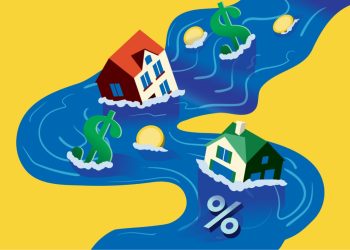First-time and single women homebuyers have resurfaced in the real estate market, contributing to a significant share of transactions in a year marked by full-steam-ahead sales, according to the National Association of REALTORS® (NAR) 2016 Profile of Home Buyers and Sellers survey. First-time homebuyer sales rose to a share of 35 percent, the survey found; single women homebuyer sales rose to 17 percent.
“Young adults are settling down and deciding to buy a home after what was likely a turbulent beginning to their adult life and career following the Great Recession,” says Lawrence Yun, NAR chief economist. “Demand increased over the past year because of a robust job market for those with a college degree and renter fatigue at a time when homeowners continue to see their equity rise. These factors were why more first-time buyers (67 percent) said a desire to own a home of their own was the primary reason for their purchase (64 percent in 2015; 53 percent in 2014).
“Despite having a much lower income ($55,300) than single male buyers ($69,600), female buyers made up over double the amount of men (7 percent),” Yun adds. “Single women for years have indicated a strong desire to own a home of their own, as well as an inclination to live closer to friends and family. With job growth holding steady and credit conditions becoming somewhat less stringent than in past years, the willingness and opportunity to buy is becoming more feasible for many single women.”
Though the growth among new homeowners is encouraging, their overall share of the market is still subpar, according to Yun. The lack of affordable new and existing inventory, the outpacing of home prices to wages, and the difficulty in saving for a down payment is why the homeownership rate for 18- to 35-year-olds is currently hovering near its historical low.
“First-timers’ ability to enter the market more convincingly over the next year greatly depends on supply improvements at the lower end of the market and if wages can finally awaken from their sluggish pace of growth,” says Yun.
Notably, 90 percent of respondents to NAR’s survey worked with a real estate agent to buy or sell a home, compared to 8 percent of for-sale-by-owner listings (FSBOs)—an all-time low.
Single Women Buyers on the Mend, Age of First-Time Buyers on the Rise
As in years past, married couples once again made up the largest share of buyers (66 percent) and had the highest income ($99,200), according to the survey; however, single women made up more of the buyer pie than in recent years. After falling to 15 percent of buyers a year ago, single women represented 17 percent of total purchases (highest since 2011 at 18 percent).
The median age of first-time buyers in this year’s survey was 32, matching the all-time high last set back in 2006, and up from 31 the past five years. The typical first-time buyer had a higher household income ($72,000) than last year ($69,400) and purchased a slightly larger home (1,650 square feet; 1,620 square feet in 2015) that was more expensive ($182,500; $170,000 in 2015).
The typical repeat buyer was 52 years old (53 in 2015), earned $98,000 ($98,700 in 2015) and purchased a 2,000-square-foot home (2,020 square feet in 2015) costing $250,000 ($246,400 in 2015).
Buyers Carrying More Student Debt; Difficulty Obtaining Mortgage on the Decline
Down payment sizes have roughly stayed the same in recent years—in this year’s survey, it was 6 percent for first-time buyers and 14 percent for repeat buyers. Fifty-nine percent of buyers financed their purchase with a conventional mortgage, and 33 percent of first-time buyers took out a low down payment Federal Housing Administration (FHA)-backed mortgage.
“Fewer first-time buyers (40 percent) compared to a year ago (45 percent) indicated that the mortgage application and approval process was somewhat or much more difficult than they expected,” says NAR President Tom Salomone, broker/owner of Real Estate II Inc. in Coral Springs, Fla. “Those with healthy credit scores and manageable or little debt should talk to a lender to see if they qualify. They’ll likely discover that obtaining a mortgage isn’t quite the confusing and tiring inquisition it was in the years immediately after the downturn.”
Personal savings ranked first for both first-time buyers and repeat buyers as the primary source of their down payment. The second most popular source for first-timers was a gift from a friend or relative (24 percent; 27 percent in 2015), and for repeat buyers it was the sales proceeds from their previous residence.
Respondents reported that debt (all types) delayed saving for a down payment for a median of three years. For first-time buyers, 40 percent indicated they’re carrying student debt, with a typical amount of $26,000 ($25,000 in 2015). Furthermore, of the 26 percent of first-time buyers who said saving for a down payment was the most difficult task in the buying process, 55 percent said student debt delayed saving.
“As NAR survey findings discovered earlier this year, even those financially able to make on-time payments on their student loans are struggling to save for a down payment, and many expect to be delayed from buying a home by over five years,” says Yun. “Repaying student debt could slow the path to homeownership even more for those living in markets with steep rents and home prices.”
Buyers Rely on Internet and Agents; Single-Family Homes Top Choice
This year’s survey proved once again that the two most popular resources for homebuyers remain the internet (95 percent) and real estate agents (92 percent). Despite a record-high 51 percent of buyers saying they found the home they purchased online, most buyers who used the internet still ended up purchasing their home through an agent (90 percent).
Mobile devices and tablets are increasingly becoming a resource for buyers. Their usage lifted to 72 percent in this year’s survey, which is up from 61 percent a year ago. Furthermore, 58 percent of buyers indicated they found the home they purchased on a mobile app.
“Regardless of the plethora of online resources readily available at the click of a mouse or the swipe of a thumb, consumers serious about buying a home continue to seek the expertise and market insights that only a Realtor® can provide,” says Salomone. “Given the numerous competitive markets with minimal supply, it’s no surprise that both first-time and repeat buyers sought an agent for assistance finding the right home and negotiating the terms of the sale.”
The most common housing type continues to be a detached single-family home (83 percent for second straight year) and one in a suburban area (54 percent; 52 percent in 2015). Meanwhile, purchases of townhouses or row houses remained at 7 percent for the third straight year; only 4 percent of buyers purchased a condo.
Overall, the typical home bought was built in 1991 and had three bedrooms and two bathrooms. The share of buyers who purchased new home was at an all-time survey low of 14 percent.
Seller Use of Agent Remains High; Desire for Bigger House Primary Reason for Listing
For the second straight year, 89 percent of sellers sold their home with an agent. This in turn—also for the second year in a row—kept for-sale-by-owner sales to their lowest share (8 percent) since the survey’s 1981 inception and below 10 percent since 2012.
“Although the imbalance of supply in relation to demand in recent years continues to put many sellers in the driver’s seat, they’re still looking for a Realtor® now more than ever to price their home competitively, market their home to the widest number of eyes possible and ultimately help close the deal within a given timeframe,” says Salomone.
The typical seller over the past year was 54 years old (unchanged since 2014), had a household income of $100,700 ($104,100 in 2015), and was in the home for 10 years before selling—a year longer than 2015 and matching the all-time high in 2014. Fewer sellers indicated they wanted to sell earlier but were stalled because their home had been worth less than their mortgage (12 percent versus 14 percent a year ago); the figure was 17 percent in 2014.
Sellers realized a median equity gain of $43,100 ($40,000 in 2015)—a 24 percent increase (23 percent last year) over the original purchase price. Homes sold after 21 years of ownership had the largest equity gain (124 percent or $127,600); underlining the volatility during the downturn, equity gains fell to 3 percent for owners who bought between eight and 10 years ago.
With tight inventory conditions gripping most markets once again over the past year, sellers were considerably more successful finding a buyer in a shorter amount of time, with homes typically on the market for only a month.
A tad more sellers traded up (44 percent) compared to last year (42 percent) and slightly more, at 32 percent, traded down (31 percent in 2015). Sellers moved a median distance of 20 miles—72 percent stayed in the same state—and the most popular reason given for selling their home was it being too small (18 percent).
Feedback from sellers underscored once again that referrals and repeat business remain a large source of new opportunities for real estate agents. Nearly two-thirds of responding sellers either found their real estate agent through a referral by a friend, neighbor or relative, or used their agent from a previous transaction. Additionally, 85 percent of sellers indicated that they would definitely or probably use their agent again or recommend him or her to others.
For more information, please visit www.realtor.org.











